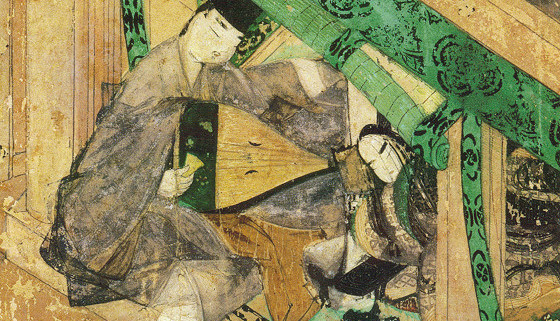The newest twist on the world’s oldest novel
Written in around 1,000 A.D., consisting of over 1,000 pages, ‘The Tale of Genji’ is widely regarded as the first ever novel written. The Tale of Genji depicts the story of Prince Genji, an illegitimate son of Emperor Kiritsubo, who due to politics demotes Genji to a life of a commoner; the story focuses on his romantic life whilst also detailing character in and around the imperial throne. Seen as the epitome of translation challenges due to the complexity of the Heian period court Japanese, Murasaki Shikibu’s ‘The Tale of Genji’ is no fast translation, as Dartmouth College professor Dennis Washburn found out as he embarked on the mammoth task of translating this influential Japanese novel from Japanese to English. He states “It took me 15 years of steady, almost daily, work.”
Washburns effort is not the first complete English rendition of Prince Genji’s life story; it was the work of Arthur Waley, a researcher of the Chinese and Japanese language that took that honour. Although Suematsu Kenchō produced the first English version more than 40 years before ‘The Waley Genji’ as it is known, The Suematsu Genji was not of a good quality and to add to that only a few chapters were translated. The English translations of note are The Waley Genji (1926-1933), The Seidensticker Genji (Edward Seidensticker, 1976), The McCullough Genji (Helen McCullough, 1994), and The Tyler Genji (Royall Tyler, 2001). Now Washburn can add his name to the list, not bad for someone who did not initially intend to carry out this massive task as he explains “I had never considered doing a translation of it before then, and to be honest, I had to think a long time before undertaking the work. It was a daunting prospect and I wasn’t confident.”
All of the English translations of ‘The Tale of Genji’ vary significantly from one another. For example, Waley’s Genji combined his modern world with the Heian period original and although considered a great accomplishment at the time and is still widely read today, it was criticised by some purists for the changes Waley made to the original. Whereas Seidensticker’s Genjis tried to improve on Waley’s version by not deviating too much from the original text and making it more readable by giving the characters names so that the story is easier to follow. McCullough’s Genji is an abridgement, while Tyler’s Genji is focused more on the poetic version that the original displayed, and the use of commentary and footnotes to explain the cultural aspects of the story, he was also praised for not adding in his own interpretations which is something other translators have given into.
Washburn himself has said he ‘respects’ all the earlier translations, stating “They each do different things well. However, there can never be a definitive translation of an important work like the ‘Genji,’ and so I had a couple of key aims for my version.” Washburn said he wanted his version of Genji to give readers the same feeling as the readers of the original from the Heian period whilst trying to replicate the style of Murasaki. Washburn’s Genji is something in between Seidensticker’s and Tyler’s Genji as he attempted to mix the original style of writing with clarity for the English language readers, not a task for the faint hearted.
A story reported by Japan Times




Trackbacks & Pingbacks
[…] is widely considered as the world’s oldest novel which we previously wrote about in an earlier post. But now two more recent famous children’s classics; Julia Donaldson’s ‘The Gruffalo’ and […]
Comments are closed.